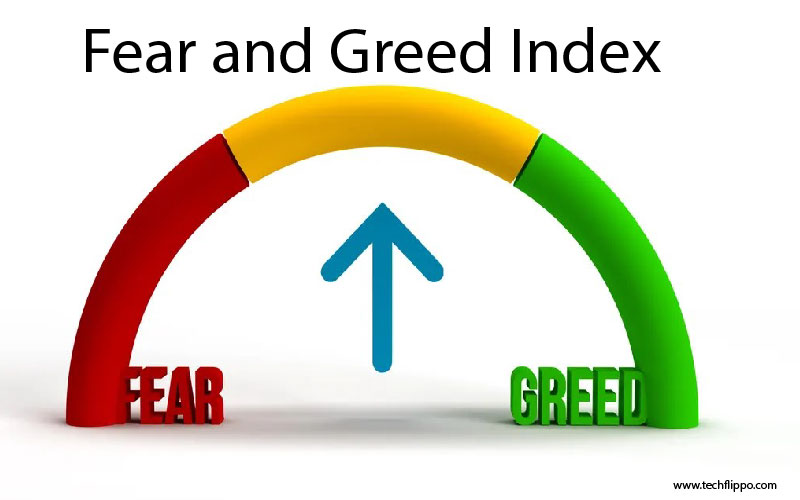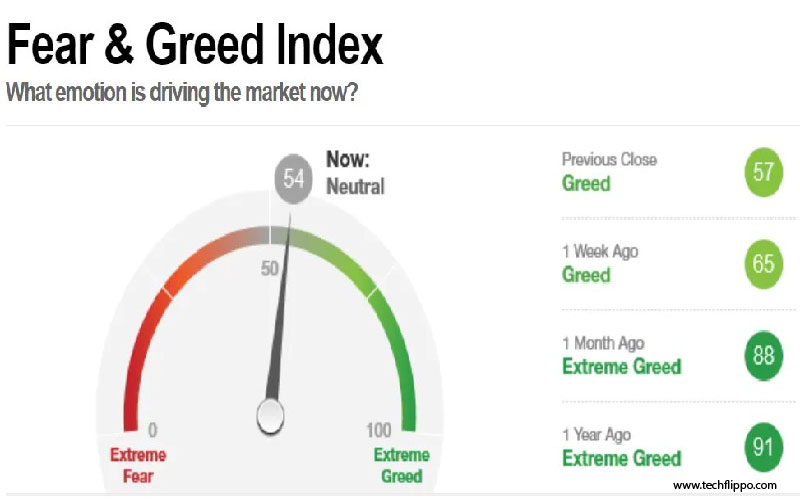What the Fear and Greed Index Reveals about Market Trends
The stock market is an emotional rollercoaster. Investors swing from extreme fear to euphoric greed, and this volatility can shape the trends we see in the financial landscape. Enter the Fear and Greed Index—a powerful tool that gauges these emotions and offers insights into market behavior. By understanding this index, you can better navigate the unpredictable waters of investing. Whether you’re a seasoned trader or a novice looking to dip your toes in the stock market, grasping what drives these sentiments can be your secret weapon for making informed decisions. Let’s delve deeper into what the Fear and Greed Index reveals about current market trends and how you can leverage it for your investment strategy!

What is Fear and Greed in the Stock Market?
Fear and greed are powerful emotional drivers in the stock market. They influence investor behavior, often leading to irrational decision-making.
When fear takes hold, investors panic. This can stem from economic downturns or negative news. As a result, they rush to sell their assets, causing prices to drop further. The market swings downward as confidence wanes.
On the flip side, greed fuels optimism and risk-taking. When markets perform well, investors become overly enthusiastic. This enthusiasm often leads them to buy into rising stocks without considering potential risks.
Both emotions create volatility in financial markets. Understanding this dynamic helps investors navigate through ups and downs more effectively. Balancing these feelings is crucial for making informed decisions in trading environments where sentiment shifts rapidly.
How is the Fear and Greed Index Calculated?
The Fear and Greed Index is a composite measure designed to assess market sentiment. It takes into account seven different indicators that reflect investor behavior.
These indicators include stock price momentum, demand for stocks versus bonds, and the volatility index (VIX). Each component provides insight into whether investors are feeling fearful or greedy.
For example, rising stock prices could indicate greed, while increased bond purchases might signal fear. The data from these factors is compiled and converted into a numerical score ranging from 0 to 100.
A lower score suggests widespread fear in the market. Conversely, a higher score indicates an environment where greed prevails. By analyzing this index regularly, traders can gauge shifts in sentiment and adjust their strategies accordingly.
The Relationship Between Fear and Greed and Market Trends
Fear and greed are powerful emotions that drive investor behavior. When fear dominates, markets often experience sell-offs. Investors worry about potential losses, leading to a rush for safety. This can create opportunities for savvy buyers seeking undervalued assets.
Conversely, when greed takes over, optimism reigns supreme. Bull markets flourish as investors chase profits without considering risks. This can inflate asset prices beyond their intrinsic value.
The Fear and Greed Index captures these emotional swings effectively. It reflects the prevailing market sentiment at any given time by analyzing several factors like volatility and momentum.
Understanding this relationship helps investors make informed decisions. Recognizing when fear or greed is influencing market trends allows them to adjust their strategies accordingly and navigate volatile environments more successfully.

Examples of Market Trends Indicated by the Fear and Greed Index
The Fear and Greed Index has been a key indicator for spotting market trends. One striking example is during the 2008 financial crisis. As fear surged, the index plummeted to extreme lows. Investors panicked, leading to massive sell-offs. This was a clear signal of a bear market.
Conversely, high readings on the index can indicate overzealous bullishness. For instance, in late 2020, as optimism about vaccine developments rose, the index soared into greed territory. Many investors jumped in without considering potential corrections.
Another notable trend occurred in March 2020 amidst initial pandemic fears. The index dropped drastically as uncertainty gripped markets worldwide. Yet shortly after hitting rock-bottom levels, the rebound showcased how quickly sentiment could shift from fear to recovery-driven greed.
These examples underline how closely traders watch this index to gauge sentiment shifts that often precede significant market movements.
Tips for Using the Fear and Greed Index in Your Investment Strategy
When incorporating the Fear and Greed Index into your investment strategy, start by monitoring trends regularly. This tool can provide real-time insights into market sentiment.
Consider using it in conjunction with other indicators. Relying solely on the index might lead to oversights. Blending data points creates a more comprehensive picture of market dynamics.
Pay attention to extreme readings. High levels of greed often signal overvaluation, while intense fear may indicate undervaluation opportunities. These situations could be ideal for buying or selling.
Set alerts for specific index thresholds that align with your investment goals. This proactive approach helps you react swiftly when significant shifts occur in market psychology.
Trust your research and instincts alongside the Fear and Greed Index findings. While it’s a powerful tool, personal analysis is irreplaceable in navigating complex markets effectively.
Conclusion
The Fear and Greed Index serves as a powerful tool for investors seeking to gauge market sentiment. Understanding the balance between fear and greed can provide valuable insights into potential price movements. By recognizing patterns indicated by this index, you can make more informed decisions about when to enter or exit positions.
Using the Fear and Greed Index as part of your investment strategy may enhance your ability to navigate market fluctuations effectively. Keep in mind that while it offers significant clues about investor behavior, it’s essential to combine its insights with other research methods. This balanced approach will help you develop a well-rounded view of market trends.
As markets continue to evolve, staying attuned to the signals from the Fear and Greed Index can empower you in making strategic choices. Embracing both caution during times of extreme fear and opportunities amid rampant greed could lead you toward greater success in your investment journey.